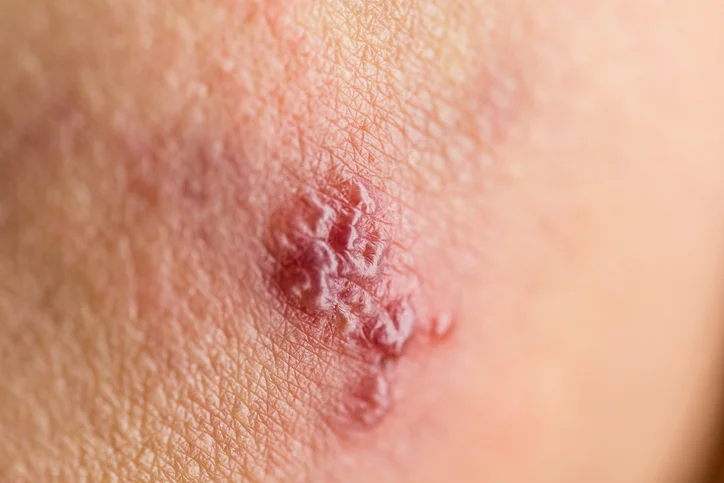Recognizing the early signs of shingles
/Recognizing the early signs of shingles
Shingles – you’ve heard of it or may have had it. Very likely what most people have to say about shingle is not complimentary. Pain, possible infection, ugly red, blistery rash, flu-like symptoms, and possible other complications, shingles is not a condition to take lightly.
Varicella zoster virus (VZV) is the culprit that can lead to shingles, a disease characterized by a painful, blistering skin rash affecting one side of the body. Anyone who has ever had chickenpox, which includes most adults over the age of 40 in the United States, is at risk for the inconvenience of shingles. Because of that, those same people now have the virus that caused it to begin with lying dormant in nerve tissue somewhere in their body. This dormant virus can be reactivated by factors such as illness, immune suppressing medications, or stress especially in adults older than 50.
How do shingles develop?
The majority of people who have had chickenpox contracted it as a child. Once a person has had chickenpox, the immune system never totally eliminates the virus that caused it. The virus remains dormant in certain nerve cells in the body located along the spinal cord.
While in the inactive state, a person will not experience any symptoms from the virus. But for reasons not completely understood, the varicella zoster virus can reactivate years later as it travels along nerve paths to erupt into shingles. The nerve branch it follows is usually located in a band on the trunk of the body. Shingles will often be present on only one side of the body, with the spinal cord as the dividing line. Occasionally shingles can appear on the legs, neck, mouth, and face.
Symptoms of shingles
A person will know something is wrong as there are specific symptoms shingles have which include the following:
· Pain - Shingles begin with burning, itching, tingling, or a stabbing sensation in the area where the rash will develop. The pain may be constant or intermittent.
· Flu-like symptoms – fever, headache, body aches, or fatigue
· Blistering rash – This is the tale-tell sign of shingles. It usually appears a few days after the pain and discomfort begin typically starting out as a cluster of small red patches that eventually develop into small blisters. The blisters are filled with fluid that will break open after which the sores will begin to slowly dry and crust over.
Once the sores have broken open and fallen off, the rash will clear up in about four weeks. Occasionally, if the rash was severe, there can be skin discoloration or scarring of the skin.
A person who has active, blistering shingles can spread the VZV to others who have never had chickenpox and have not been vaccinated for chickenpox making them at risk of developing the childhood disease. Shingles itself cannot be transmitted from person to person.
Treating shingles
Anyone who notices symptoms of shingles needs to see their doctor right away. The doctor will be able to diagnosis shingles based on the appearance of the characteristic rash.
The treatment for shingles is to prescribe antiviral medication and pain medication.
Complications of shingles
Even though the prognosis of shingles is good, not everyone who develops shingles will necessarily be done with it in approximately a month. Complications can occur which may include:
· Long-term lingering pain. This can happen if the nerve fibers are damaged during a shingles outbreak. The chronic and excruciating pain can last for months or less commonly for years even after the rash has disappeared. This is known as postherpetic neuralgia. Between 50-60% of adults over the age of 60 who have not been vaccinated against shingles will develop this condition.
· Vision loss – If shingles develop along a nerve pathway of the face this can spread to the area of the eyes. This can possibly lead to a painful eye infection and possible vision loss. Anytime shingles appear around the eye area, it needs to be evaluated right away by an ophthalmologist.
· Balance or hearing problems – Shingles may result in facial paralysis, hearing or balance issues depending on the nerves affected.
· Infections – A shingles rash always has the possibility of developing a bacterial skin infection at the site.
Preventing shingles
Fortunately, there are two shingles vaccine to choose from: Zostavax and Shingrix. Since 2006, Zostavax, approved by the Food and Drug Administration (FDA), is a live vaccine given as a single injection and offers protection against shingles for about five years.
Shingrix was approved by the FDA in 2017 and is the preferred alternative to Zostavax as studies suggest it offers protection against shingles beyond five years. It’s a nonliving vaccine made of a virus component, and is given in two doses, with two to six months between doses.
Shingrix is approved and recommended for people age 50 and older, including those who’ve previously received Zostavax. Zoxtavax in not recommended until age 60.
Neither vaccine guarantees you won’t get shingles but having the vaccine will likely reduce the course and severity of the disease reducing the risk of postherpetic neuralgia.

